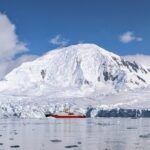Peak water in an era of climate change
By Peter Gleick | July 15, 2024
Fisherman on the Conejos River in Colorado. Image courtesy Peter Gleick
Peak water in an era of climate change
By Peter Gleick | July 15, 2024
Loading...
Together, we make the world safer.
The Bulletin elevates expert voices above the noise. But as an independent nonprofit organization, our operations depend on the support of readers like you. Help us continue to deliver quality journalism that holds leaders accountable. Your support of our work at any level is important. In return, we promise our coverage will be understandable, influential, vigilant, solution-oriented, and fair-minded. Together we can make a difference.
Keywords: climate change, climate crisis, peak water, water poverty, water security, water use
Topics: Climate Change



















Any conversation about water or climate that doesn’t address population will fall short. More people need more water and consume more resources, and, increase pollution.